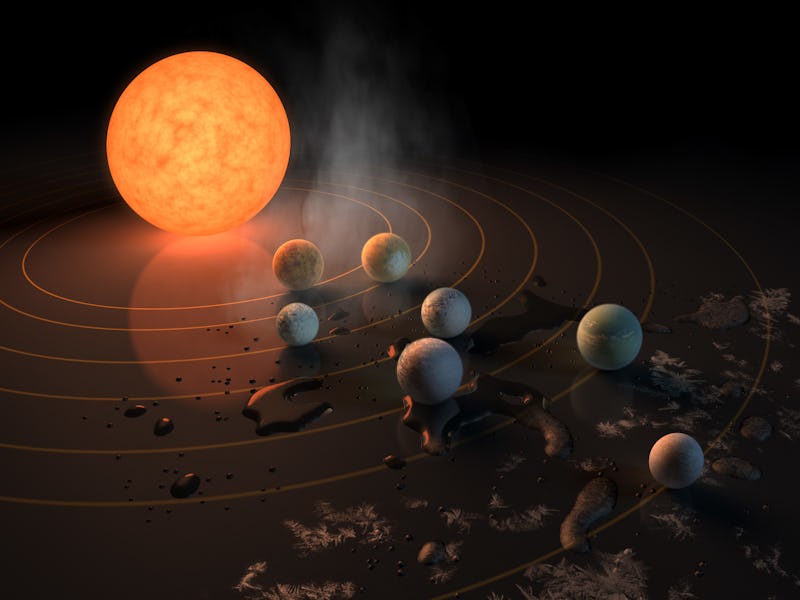
Searching for exoplanets like Proxima b is not as simple as gazing through a telescope and pointing them out. These bodies, located light-years from Earth, aren’t visible from standard telescopes. Therefore, astronomers, the ingenious bunch that they are, have devised creative ways to observe these far-off planets. In the first main session of the Breakthrough Discuss Conference at Stanford University, Caltech’s Courtney Dressing, University of Colorado’s Zachory Berta-Thompson, and UCLA’s Aomawa Shields presented the latest research — and more interestingly, some of their own thoughts — on scientists’ search for exoplanets orbiting M dwarf stars.
First off, Dressing discussed what makes M dwarf stars so special. She explains that these cool, red stars emit less light pollution, making them easier to probe for orbiting planets.
“Because the star is much dimmer than the sun, direct imaging is easier,” she says. And beyond this, the stars’ moderate temperatures actually make it more likely that conditions on orbiting planets could be suitable for life. Dressing suspects that one out of every three M dwarfs hosts a habitable planet, and she predicts that a planet with life on it will be found orbiting an M dwarf. She’s hopeful, given advances in imaging.
“I think we’re getting better all the time,” says Dressing. “One of the advantages of going to smaller stars is we’ll get cooler and cooler planets”
Berta-Thompson followed Dressing, discussing the good and the bad of studying far-off exoplanets. He says we’re pretty good at it, though we have a long way to go. He takes comfort in the fact that astronomers have done so much to study exoplanets with some pretty limited data.
“We can do a lot with a point of light, particularly from an exoplanet perspective,” he says. Berta-Thompson points to Pluto as an example, reminding everyone that fly-by photos of the dwarf planet came as the result of 70 years of studying Pluto as a tiny point of light.
Astronomers studies Pluto for decades as just a point of light. We're in a similar situation with exoplanets now.
Berta-Thompson is part of a team that published a paper this week on the discovery of yet another exoplanet, designated LHS 1140b. It orbits — you guessed it — a red dwarf star.
The big question for each exoplanet discovery is, of course, can it support life? And while we can’t simply call LHS 1140b on the phone, Berta-Thompson explains that we can examine exoplanets as they transit their stars to see whether the planets block light at certain wavelengths that correspond to the emission spectrum of water. In this way, we can figure out if conditions are right for life.
Last up was Shields, who threw a wrench into the whole question of habitability:
“Orbital distance is but one tiny pixel in the rich picture called planetary habitability,” she told the audience. In other words, it’s not just about how far from a star a planet is, it’s also about the radiation of the host star, and many of the planet’s properties. To illustrate, she flashed a diagram of all the factors that could complicate the question.
Aomawa Shields wants you to be overwhelmed by how complicated it is to figure out whether a planet is habitable.
“You’re not meant to read every box on this slide,” she says. “You’re meant to feel as overwhelmed as I do when I look at it.”
That being said, Shields is hopeful about the search for habitable planets orbiting M dwarfs. One reason? Their relative stability gives life a long time to develop.
“We’re very excited for the prospects of life around M dwarfs,” says Shields. “They burn their fuel very slowly.” This allows lengthy timelines for planetary and biological evolution. Let’s not forget that life on Earth didn’t happen overnight.
Tune into Facebook Live to watch the presentations from the Breakthrough Discuss Conference.